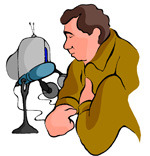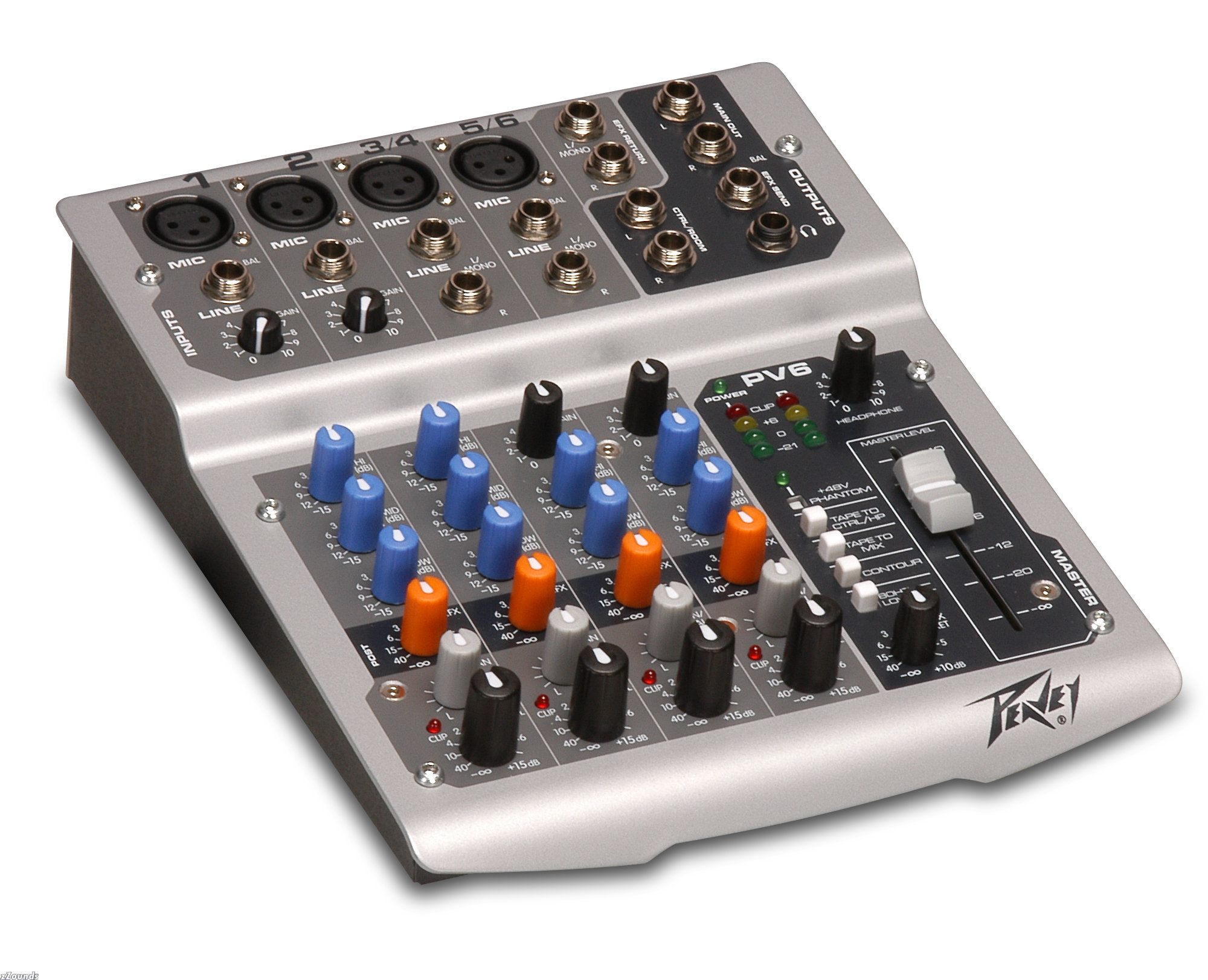Thoughts on Voice Acting for the Novice...
Voice-Acting: A Two-Headed Demon Dog of a Job!
Voice acting today is a two-headed demon dog - a real double edge sword. The duality of it can
cut your chances in the voice over market. Not only are you the ‘talent’ and need the acting chops to follow your dream, but as a self-employed business person with a home studio, you re your own 'audio engineer.' (Unless you have unlimited cash for studio time, etc, this is how you do it!)
 First, you must have the skills to ‘act’ the parts for which you’re auditioning. Whether it’s a car promo or audio book, it is ‘acted’ from a certain approach or perspective! You may benefit from acting classes because you will always be competing with 50 to 150 people for your average job. Don’t get discouraged, there are many ways to approach this aspect of the job. In Part 2 of this article I want to talk about the 'Voice Acting' aspect of this job in more detail.
First, you must have the skills to ‘act’ the parts for which you’re auditioning. Whether it’s a car promo or audio book, it is ‘acted’ from a certain approach or perspective! You may benefit from acting classes because you will always be competing with 50 to 150 people for your average job. Don’t get discouraged, there are many ways to approach this aspect of the job. In Part 2 of this article I want to talk about the 'Voice Acting' aspect of this job in more detail.
Second, you need the ‘engineering’ and ‘producer’ skills to make yourself sound good in your home digital recording studio. On this note, let’s look at some of the gear I have and why. I will state here and now that many choices are purely personal preference.
On the software side I use Adobe Audition 3.0. Some people say it is more than I need for voice work but I find it very user friendly. Also, it is adaptable to use if I choose to record music or if I am called upon to add music or sound fx to a voice job. Also, the many built in features allow me to clean-up a recording or change it to suite the client’s needs.
| Rode NT1-A Microphone |
The hardware was a much more difficult choice for me - especially the mic. My choice was based on every scrap of info I could find on the ‘net regarding quality, price and who was using what. The choice I made and love is the RODE NT1-A.
The next item is the preamp and mixer. Originally, I was using an inexpensive ART Tube Preamp with USB connectivity. It has a nice sound but didn’t solve certain problems. If you try to monitor from your output there is latency. That is lag between the time you say something and hear it from the headphones. ASIO driver’s should correct this but my computer with WIN 7 has an issue with ASIO drivers.
Also, I wanted to add the ability to EQ at the source for some project, like when i do my podcast recordings.
This led me to switch my ART Tube MP preamp for the PEAVEY PV 6. This was $130 (cdn) of awesome. While it doesn’t have the tube it certainly simulates that warm sound. I maintain a USB conncection and have a 3 band EQ on not one (as before) but 6 inputs. This plus other great features have made me very happy.
 |
| Peavey PV 6 |
The PV 6 allows me to (and this was VERY important) MONITOR of the source. This means absolutely no latency! Whoot! And the PV 6 has phantom power on 2 chanels. would have to pay approx $100 more to get these features in a lesser piece of equipment. Soooo, yes, consider this my whole-hearted endorsement.
I have a pair of inexpensive SONY MDR-V150 headphones. They are VERY comfortable and sound SUPER, but rattle slightly when you move. So, these will be relegated to use with my iPad as I move onto a better set of phones for voice overs. Until then a small piece of padding keeps them quite.
I have a pair of inexpensive SONY MDR-V150 headphones. They are VERY comfortable and sound SUPER, but rattle slightly when you move. So, these will be relegated to use with my iPad as I move onto a better set of phones for voice overs. Until then a small piece of padding keeps them quite.
 |
| Sony MDR-V150 Headphones |
Most important, you have to be comfortable with whatever software and hardware you chose. You need to be able to work quickly, efficiently and you have to “Keep it Simple” (The KISS Principal) without limiting yourself.
If you need audio engineering skill then look no further than the Internet. Numerous tutorials online cover most audio software packages and give insight into how to record. Then practice. Practice. Practice. Practice. Every recording builds your skills and increases your knowledge of your own personal studio.
If you need audio engineering skill then look no further than the Internet. Numerous tutorials online cover most audio software packages and give insight into how to record. Then practice. Practice. Practice. Practice. Every recording builds your skills and increases your knowledge of your own personal studio.
Here is a tip. Use less expensive items while you get your bearings. Example: While you are picking out a mic and deciding on which sound software to use, AUDACITY is free and fully functional. Try this before purchasing a more expensive program. It works great! Use a cheaper set of headphones until you decide on a pair. Some pros don’t use them while recording at all - it’s personal preference. Unless you really can't afford it, don't buy a cheap $80 mic. Soon enough you will be able to hear the difference. For practice though, any mic will do.
Lastly, remember that other voice over people aren't the cut throat competitors you think we are. We are a very supportive community. If you need help just ask!
Lastly, remember that other voice over people aren't the cut throat competitors you think we are. We are a very supportive community. If you need help just ask!
Remember I am just touching on subjects of interest. Please comment or ask questions.
Future blogs will touch on acoustics, networking with other VO types and more software & hardware facts and tips.
Til then…
Til then…
Cheers, Doug
Doug Jeffery Voice Overs
BTW please follow me on Twitter: @DougsVoiceOvers
Live in or near London, Ontario, Canada? Join Voice Over London Labs!
BTW please follow me on Twitter: @DougsVoiceOvers
Live in or near London, Ontario, Canada? Join Voice Over London Labs!
No comments:
Post a Comment